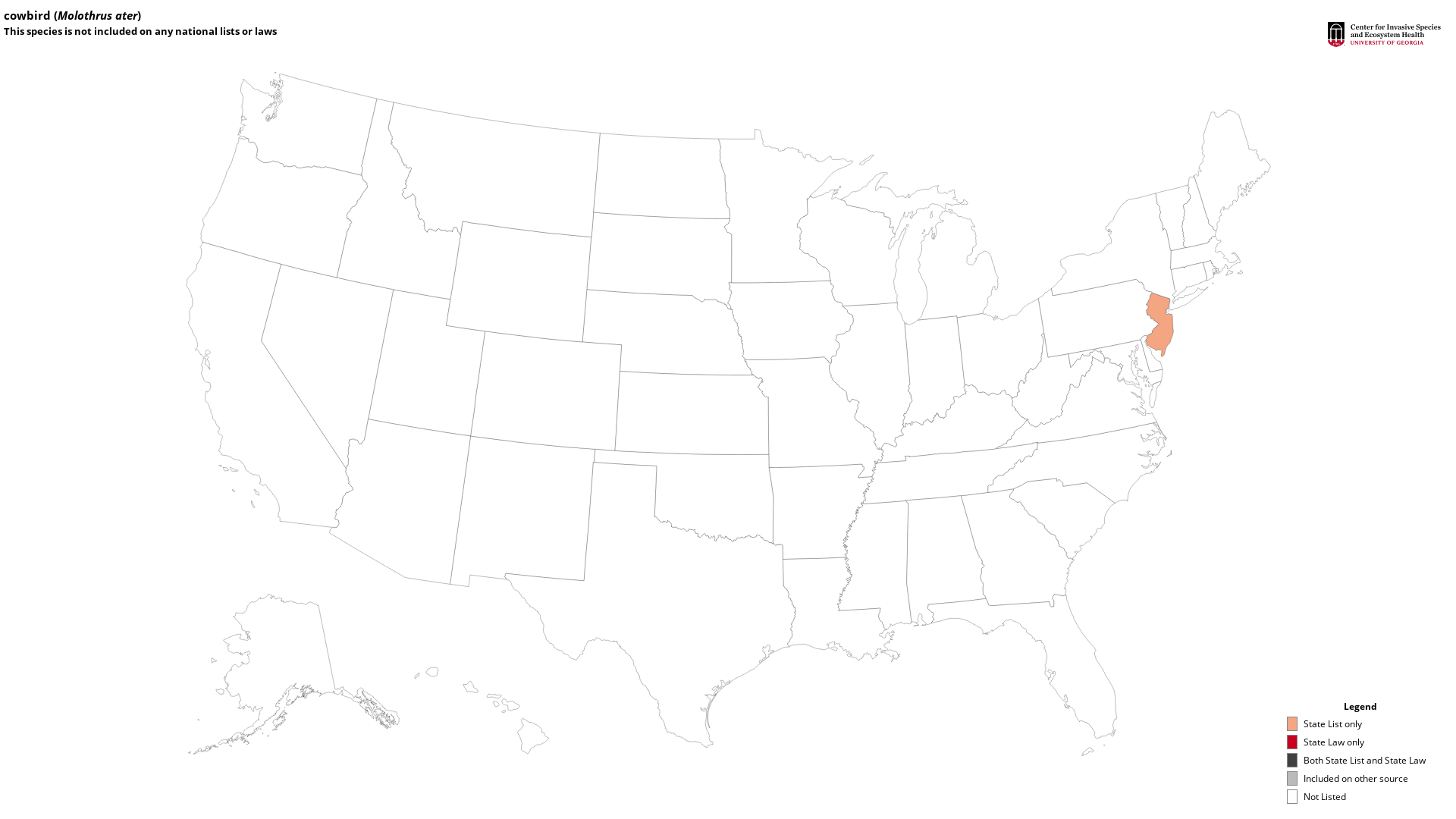cowbird
(Molothrus ater)
This species is Native to certain parts of the United States but may be invasive to others
Origin
Molothrus ater is native to the Great Plains of the United States.
Life Cycle
As obligate brood parasites, brown-headed cowbirds do not make their own nests, but rather lay their eggs in the nests of other bird species and rely on the “host” parents to raise their young. The brown-headed cowbird female waits for an unsuspecting nesting bird leaves her nest, then quickly swoops in and lays her egg in the other bird’s nest, often destroying one or more of the host bird’s eggs in the process. Due to the relatively short incubation period of cowbird eggs, and the fast growth rate of cowbird nestlings, they often hatch before the host’s eggs, and outcompete their nestmates for food, thereby reducing the nesting success of the host species. Because they do not need to care for their young, the absentee cowbirds are prolific breeders, and a single female can lay up to 40 eggs in one season.
Distribution
Brown-headed cowbird has expanded its range to most of northern North America and into northern Mexico. They are established in California,
In California, brown-headed cowbirds are a common resident and summer visitor that breed throughout much of the state. They are year-round residents in coastal California and the central valley, with populations present across northern California, the Sierra Nevada, and patches of inland desert regions during the summer breeding season.
Control Efforts
The Department of Fish and Wildlife is not actively working to control brown-headed cowbirds; however, individuals or entities may wish to implement control efforts. While there are various control strategies for brown-headed cowbird management, trapping can be an effective removal method where immediate action is required to protect affected bird species.
Molothrus ater is native to the Great Plains of the United States.
Life Cycle
As obligate brood parasites, brown-headed cowbirds do not make their own nests, but rather lay their eggs in the nests of other bird species and rely on the “host” parents to raise their young. The brown-headed cowbird female waits for an unsuspecting nesting bird leaves her nest, then quickly swoops in and lays her egg in the other bird’s nest, often destroying one or more of the host bird’s eggs in the process. Due to the relatively short incubation period of cowbird eggs, and the fast growth rate of cowbird nestlings, they often hatch before the host’s eggs, and outcompete their nestmates for food, thereby reducing the nesting success of the host species. Because they do not need to care for their young, the absentee cowbirds are prolific breeders, and a single female can lay up to 40 eggs in one season.
Distribution
Brown-headed cowbird has expanded its range to most of northern North America and into northern Mexico. They are established in California,
In California, brown-headed cowbirds are a common resident and summer visitor that breed throughout much of the state. They are year-round residents in coastal California and the central valley, with populations present across northern California, the Sierra Nevada, and patches of inland desert regions during the summer breeding season.
Control Efforts
The Department of Fish and Wildlife is not actively working to control brown-headed cowbirds; however, individuals or entities may wish to implement control efforts. While there are various control strategies for brown-headed cowbird management, trapping can be an effective removal method where immediate action is required to protect affected bird species.
Selected Images
Maps
State Lists - This map identifies those states that have this species on their invasive species list or law.
Taxonomic Rank
| Domain: Eukarya |
| Kingdom: Animalia |
| Phylum: Chordata |
| Class: Aves |
| Order: Passeriformes |
| Suborder: Oscines |
| Family: Icteridae |
| Genus: Molothrus |
| Molothrus ater |

